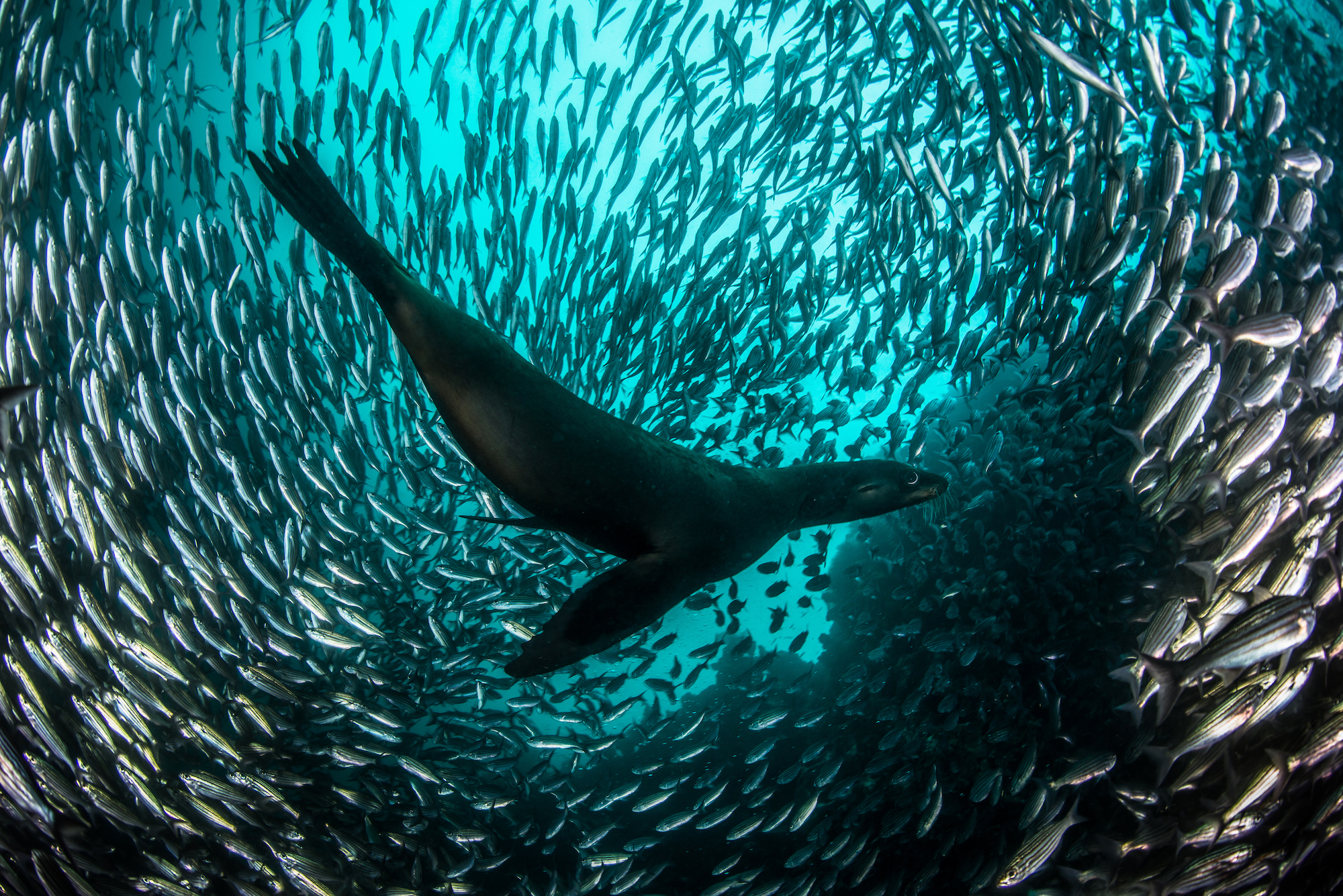

When we give marine life a chance to recoup, the ocean gives back. In protected ocean parks, the mass of fish is on average over 600 percent greater than nearby fished areas. Often, the fish return the favor when their shoals spill over from the protected area into commercial fishing grounds.
In a new study published in the journal Nature, a team of marine scientists analyzed how to maximize the effects of building such reciprocity with the ocean. Their findings show which areas of the oceans to prioritize for a triple benefit: increased carbon storage, biodiversity, and fish numbers.
Right now, only about 2.7 percent of the world’s oceans are completely protected from commercial fishing, mining, oil drilling, and other destructive activities.
The team mapped where protections would yield the greatest benefit to each of the three areas. They included multiple measures of biodiversity, considering not just where the highest concentrations of species were, but which areas include unique organisms. For carbon storage, they considered marine sediments that, if left undisturbed by nets trawling the seafloor, could store carbon for hundreds of years. And they looked at where adding a marine park could lead to spillover of sealife, increasing food supplies for us humans. The researchers developed an algorithm that can weigh the factors depending on which benefits people are most interested in.

To benefit all three categories, the study found that we must protect at least 30 percent of the oceans—and in the right places. Biodiversity must be a priority, says Enric Sala, the study’s lead author, a marine ecologist, and leads the Pristine Seas initiative at National Geographic. “We need biodiversity to provide all the services that we enjoy. There will be no fisheries without biodiversity,” he says. “Biodiversity should probably be the number one [priority].” The findings support the “30 by 30” goal that’s gaining momentum among conservationists—the idea that we must protect 30 percent of oceans and land by 2030 to protect life on Earth and reduce the impacts of climate change.
That protection doesn’t have to be to the detriment of other, more selfish goals. With strategic placement of marine reserves, global seafood catch can actually increase about 8 million tons, the study found. And if biodiversity is the emphasis, then up to 71 percent of the ocean could be protected without decreasing fishery yields. If implemented, the network of marine protected areas could provide sustainable seafood while ensuring that the ecosystems remain healthy and resilient.
Protecting the ocean can also help slow climate change. Currently, more than one percent of the ocean bottom is turned up every year to trawl for seafood. When the sediments are disturbed, the carbon stored in them can be released as carbon dioxide. The researchers estimated 1.47 petagrams of carbon (that’s 1.47 billion metric tons) are released annually from bottom trawling. That’s about the same as the carbon emissions from the aviation industry.
Joshua Cinner, an environmental social scientist focused on coral reef fisheries, says that the findings add to growing research (including his own) that shows marine protected areas can achieve multiple goals if located strategically. “The big lesson for marine conservation here is outcomes are substantially improved through strategic coordination among countries,” he wrote to Popular Science in an email. “By working together, countries can maximise the benefits of conservation at the lowest costs.”
[Related: Only 13 percent of the world’s oceans are still wild]
Just like addressing the climate crisis, protecting the oceans is a global effort. The vast majority of the priority areas that researchers identified are in the jurisdiction of individual countries, within 200 miles of their shores. That zone is where 96 percent of the global fish catch comes from. So to protect for a triple benefit, international cooperation will be key, the authors write: “A globally coordinated effort could be nearly twice as efficient as uncoordinated, national-level conservation planning.”
Sala says we need something like a Paris climate agreement but for biodiversity. The opportunity to enact that coordinated effort is coming soon. The study results come just ahead of the United Nations Convention of Biological Diversity, which will take place in Kunming, China, in May. There, international representatives from 190 countries will sign a biodiversity agreement. Sala hopes the treaty will include “30 by 30” as a target. “This decade is our last, best chance to restore our balance with the ocean.”
